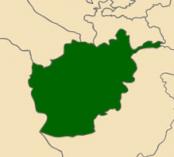
I would like to reflect that Afghanistan is facing an armed conflict, and that the security situation has been gradually degrading over the past few years. In 2013 NGOs were impacted by 228 violent incidents, the highest number since 2011 and the worst year on record. During the four first months of 2014, 43 security incidents impacted NGOs in Afghanistan.
Most of the NGOs under the umbrella of the Agency Coordinating Body for Afghan Relief & Development (ACBAR) have been operating in the country for more than 10 years, and have vast experience in dealing with Afghanistan’s volatile environment and specific security incidents. Afghanistan is a complex country with 34 provinces and 358 districts affected by more than 30 years of almost-constant armed conflict.
Currently a domestic armed conflict continues between the Government of Afghanistan and numerous, disparate armed opposition groups. The impact of this conflict on the delivery of, and access to, health care, is varied, and the barriers to access of health care are huge. Not only does the ongoing conflict limit very seriously the population’s access to health care, but the public health system has been modified by Tokyo agreements in 2011.
In preparation for the upcoming elections of Spring 2014, the Government of Afghanistan published a list of 173 health facilities that had been designated as polling stations. ACBAR would like to reiterate that according to international humanitarian law, health care facilities retain their protected status as long as they are exclusively devoted to the care of the wounded and the sick and are not used to advance military goals. Designating health facilities as polling stations would thus put the patients and the staff working in these facilities at risks of attacks.
This protected status is what allows health care providers to operate in conflict situations, which is at the heart of their mission to save lives. It is by operating as neutral, impartial actors that health care providers are able to gain access and respect from all parties to a conflict. In the current context, using health care facilities as a political space would severely alter the perception that other actors and the population have of them.
Health care access will remain complicated after the election for several reasons.
In areas less affected by the ongoing conflict, the patients still face issues linked to the poor quality of the public health system programs (the Basic Package of Health Services (BPHS) and the Essential Package of Health Services (EPHS).
Persons living in these areas benefit from a relatively easy access to the health facilities; medical staff is working and implementing the national public health policy: BPHS and EPHS. The patients might reach hospital but the new ‘on budget’ system, does not allow the quality of the health care to be increased. The system is based on a really low price per capita (according to WHO standards); monitoring of the programs is nearly nonexistent and based on a non-crosschecked information data collection and system for tracking the performance There is an increasing corruption and non-proper provision of health care.
In the parts of the country heavily affected by the conflict, the current health system is inadequate as the areas with ongoing conflict present specific challenges to access and monitoring with the Government of Afghanistan being part of the conflict in the same time.
Lack of access to health care remains a key problem. There are, more or less, 58 districts that health providers are unable to access – either permanently or temporarily. At the end of 2013, 12 provinces out of 34 were experiencing high levels of insecurity. These provinces are also under BPHS and EPHS policies.
In these conflict zones, military activities prevent patients from accessing health facilities: it’s either too dangerous or too far for the sick and wounded to travel mainly as the closest clinic is no longer functioning. These access difficulties have the greatest impact upon the most vulnerable people of Afghanistan: women, children, people with disabilities and the elderly, who cannot go alone to health facilities.
The ongoing conflict prevents patients from accessing health facilities: it’s either too dangerous or too far for the sick and wounded to travel because the closest clinic is no longer functioning.
These access difficulties have the greatest impact upon the most vulnerable people of Afghanistan: women, children, people with disabilities, and the elderly, who often cannot go to health facilities alone.
All parties to the conflict engage in activities that create insecurity on the roads. IEDs, combat operations, vehicle checkpoints (including searches of medical vehicles) and increased operational costs (armed opposition groups’ tax collection) all prevent mobile health services from functioning properly and limit access to care in the most remote places. These activities prevent, moreover, the direct and timely access of wounded and sick persons to appropriate medical services.
All parties to the conflict, whether armed opposition groups or pro-government forces, also need to be sensitized to the protection of civilians, of health facilities, and of health workers, in accordance with international law and other relevant normative frameworks.
To conclude, I want to insist on the fact that the situation in Afghanistan is complex – the impact of the conflict does not affect all areas equally. Clearly though, the risks to the delivery of adequate health and aid services are very high.
Justine Piquemal is the director of Agency Coordinating Body for Afghan Relief & Development (ACBAR).

